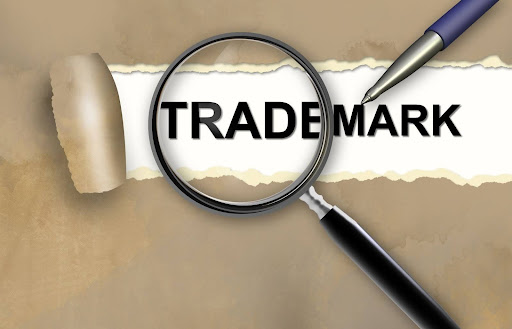How Small Businesses Can Use the Madrid Protocol to Safeguard Their Brand Abroad

Small businesses often dream of expanding beyond their local markets. The global stage is enticing—new customers, fresh opportunities, and the chance to make a mark internationally.
However, stepping into foreign markets without protecting your brand can be risky. Imagine building a strong reputation at home, only to find out someone overseas is riding your coattails with a similar name or logo. This is where you need the Madrid Protocol.
The Madrid Protocol: A Brief Overview
The Madrid Protocol is a one-stop shop for trademark registration across multiple countries.
Instead of filing separate applications in each country, which can be time-consuming and expensive, small business owners can file a single application through their home country’s trademark office.
This application is then extended to other countries that are members of the Madrid System. It’s a streamlined process that can save both time and money.
Common Pitfalls to Avoid
While the Madrid Protocol offers a simplified path, it has its own challenges. Here’s how you can steer clear of common mistakes:
- Not Conducting a Thorough Trademark Search
You’ve come up with the perfect brand name. It’s catchy, memorable, and embodies your business’s identity. But before you file that trademark application, have you checked if it’s already in use? Not doing so could land you in legal hot water.
You can conduct a comprehensive trademark search using the World Intellectual Property Organization (WIPO) Global Brand Database for existing and pending trademarks in your industry. This is to discover if there are trademarks that are similar to that of your brand.
This isn’t just about avoiding legal battles; it’s also about ensuring that your brand stands out. If another business is already using a similar name or logo in one of your target countries, your application could be rejected. Worse, you might have to rebrand after you’ve already established a presence in that market.
- Overlooking the Importance of Local Regulations
The Madrid Protocol simplifies the process of international trademark registration, but it doesn’t mean you can ignore local trademark laws. Each country has its own set of rules, and what is obtainable in one country might not be in another.
For instance, some countries have strict guidelines on what can be trademarked. Others might require additional documentation or have specific requirements for the way trademarks are used. Ignoring these local nuances can result in delays or even the refusal of your trademark application. It’s important to know the trademark regulations of each country you’re targeting.
- Failing to Monitor and Maintain Your Trademark
Registering your trademark under the Madrid Protocol isn’t a one-and-done deal. It’s essential to keep tabs on your trademark and ensure it’s being used correctly. This means monitoring for any potential infringements and taking action if necessary.
Moreover, trademarks need to be renewed periodically, say every 10 years. If you forget to renew your trademark, you could lose your protection in that country. That’s where a good business attorney can be a lifesaver—they’ll make sure your trademark remains valid and enforceable.
- Assuming One Size Fits All
It’s easy to fall into the trap of thinking that your brand strategy at home will work just as well abroad. But what resonates with customers in the U.S. might not hit the same notes in, say, Japan or Germany.
Cultural differences play a significant role in branding. Colors, symbols, and even the way words are perceived can vary widely from country to country. What’s more, a brand name that’s perfectly acceptable in English could have an entirely different—and potentially negative—connotation in another language. Always do your homework and consider local preferences when extending your brand internationally.
- Not Seeking Professional Guidance
The Madrid Protocol can be a powerful tool, but it can be complex to understand in layman’s terms. To navigate the application process, understanding local regulations, and maintaining your trademark requires expertise. This is where a business attorney with experience in international trademark law can make all the difference.
They’ll help you avoid common pitfalls, ensure your trademark application is completed correctly, and provide guidance on how you can maintain your trademark’s integrity. And if any issues arise, they’ll be there to represent your interests.
- Ignoring the Power of Monitoring Services
Once your trademark is registered, it’s tempting to sit back and relax. But that’s a mistake. The business world is constantly evolving, and your brand could be at risk if you’re not vigilant.
Monitoring services can help you keep an eye on potential trademark infringements. These services track new trademark filings and alert you if someone tries to register a mark that’s too close for comfort. When you are proactive with monitoring can save you from costly legal battles down the road.
- Underestimating the Cost
While the Madrid Protocol can save money compared to filing in each country individually, it has its own expenses. There are initial filing fees, costs associated with maintaining your trademark, and potential legal fees if issues arise.
It’s essential to budget for these costs from the outset. Failing to do so could leave you scrambling for funds at a critical moment. And remember, a business attorney can help you understand the full extent of the financial commitment involved in protecting your brand internationally.
Conclusion
Expanding your brand into international markets is quite an exciting venture, but it has challenges. The Madrid Protocol offers a streamlined way to protect your brand across multiple countries, but you must avoid the common pitfalls that could potentially undermine your efforts.
Conduct thorough trademark searches, understand local regulations, and maintain your trademark vigilantly. Don’t underestimate the importance of cultural differences, and always seek professional guidance when necessary. And above all, stay proactive in monitoring your brand’s presence in the global marketplace.
By taking these steps, small business owners can confidently use the Madrid Protocol to protect their brand abroad, ensuring long-term success in international markets.





